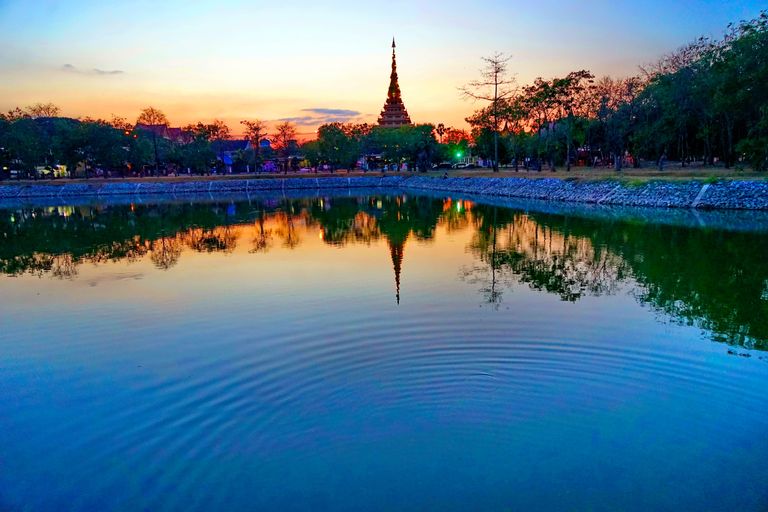The daily cycle of sunrises and sunsets brings rhythm, beauty, and balance to life on Earth. These transitions from night to day and day to night are more than just stunning visual spectacles; they are fundamental to the biological, environmental, and psychological balance that sustains life. Imagine a world where these gradual changes did not exist—an Earth where daylight was constant, or darkness prevailed without end. This hypothetical scenario would reshape life as we know it, affecting everything from our ecosystems and climate to the psychology and well-being of humanity.




Constant Light or Darkness: The Physical Impact on Earth
In a world without sunrises or sunsets, Earth would likely experience either perpetual daylight or unending night. The rotational movement of Earth on its axis is what creates the alternation between day and night, and without this rotation, sunlight would continuously shine on one side of the planet while the other side remained in darkness. This shift would have dramatic consequences for the climate, causing extreme temperature variations between the two hemispheres.
On the sunlit side, temperatures would rise to unbearable levels, with no nightly cooling period to mitigate the heat. The atmosphere would likely be stripped of moisture, resulting in hyper-arid deserts incapable of sustaining life. On the dark side, temperatures would plummet to freezing extremes, plunging any exposed water into ice and reducing habitable areas. The lack of balance between the two halves of the planet would result in severe, inhospitable climates that would make survival nearly impossible for most species as we know them.



The Disruption of Ecosystems and the Loss of Circadian Rhythms
Sunrises and sunsets play a critical role in regulating the biological rhythms of plants, animals, and humans. Most living organisms, including humans, operate on an internal biological clock known as the circadian rhythm, which is influenced by the day-night cycle. These rhythms govern essential processes such as sleep, feeding, reproduction, and migration.
Without the gradual transitions of sunrise and sunset, circadian rhythms would become disrupted, impacting every level of the food chain. Plants, for example, rely on sunlight for photosynthesis, a process that supplies food and oxygen to nearly all living organisms. In a world without the regular ebb and flow of sunlight, plants would either be forced into continuous photosynthesis or, if left in darkness, cease the process altogether. The breakdown of plant life would have a cascading effect on herbivores, omnivores, and predators, leading to the collapse of ecosystems that rely on day-night cycles for sustenance.
Animals, too, would struggle to adapt. Migratory birds rely on the light of dawn and dusk to navigate, while nocturnal creatures, such as owls and bats, depend on darkness to find prey and avoid daytime predators. With constant light or darkness, these species would lose their natural behaviors and ultimately face extinction, as their habitats and hunting patterns would no longer align with their instincts.


The Psychological and Health Effects on Humanity
Humans are deeply connected to the rhythm of sunrises and sunsets, which affect not only our sleep cycles but also our mental and emotional well-being. Exposure to daylight is critical for producing serotonin, a neurotransmitter associated with feelings of happiness and well-being, while darkness triggers the production of melatonin, a hormone that regulates sleep.
In a world without these transitions, people would likely experience profound psychological and physiological impacts. Constant light exposure could lead to chronic sleep deprivation, mood disorders, and stress-related health issues. Lack of natural light cues would cause "circadian misalignment," making it difficult for people to maintain regular sleep schedules, which could lead to insomnia, fatigue, and increased rates of depression and anxiety.
Conversely, in a perpetually dark environment, people would suffer from a lack of vitamin D, which is produced when skin is exposed to sunlight. Vitamin D deficiency is linked to weakened immune systems, bone health issues, and a range of other health complications. Without the balance of light and darkness, humans would lose an essential aspect of physical and mental health, impacting overall quality of life.




Loss of Cultural and Spiritual Significance
Sunrises and sunsets hold profound cultural, spiritual, and artistic significance across societies. These daily transitions symbolize the passage of time, the balance between beginnings and endings, and the cycles of life. Sunrises often symbolize hope, renewal, and new beginnings, while sunsets represent rest, reflection, and closure. In many cultures, rituals and practices are centered around these times of day, celebrating the natural beauty and transient qualities of life.
Without sunrises and sunsets, humanity would lose a powerful source of inspiration and symbolism. Literature, art, and music that draw from the imagery of dawn and dusk would become obsolete, and people might feel a greater sense of disconnection from nature. The profound experience of watching the sun rise or set, a reminder of our place in the universe, would be lost, leaving a void in the cultural and emotional landscape of humanity.



The Impact on Time-Keeping and Seasonal Changes
The cycle of sunrises and sunsets provides a natural method for humans to keep track of time. Days, weeks, and months are all structured around the Earth's rotation and orbit, allowing people to measure the passage of time with accuracy. In a world without day-night transitions, traditional methods of timekeeping would lose their meaning, potentially creating chaos in daily routines and schedules.
Moreover, sunrises and sunsets play an important role in marking seasonal changes, influencing the tilt of Earth and its position relative to the sun. Without these markers, humans would find it challenging to track seasonal patterns, which are essential for agriculture, festivals, and various life events. Farmers, for instance, rely on seasonal changes to plan crop cycles and harvests. A world without these natural time markers would lose one of the essential frameworks that helps civilizations plan and thrive.



Conclusion
A world without sunrises or sunsets would be an entirely different reality, devoid of the rhythms that shape life on Earth. Beyond the loss of natural beauty, the absence of day-night transitions would disrupt ecosystems, disturb biological rhythms, and impact human health, well-being, and culture. Sunrises and sunsets are more than just daily occurrences—they are essential to the intricate balance that sustains life. They shape our physical world, regulate the natural order, and imbue life with meaning. The existence of these transitions reminds us of the harmony and interdependence of nature, a profound cycle that we often take for granted. In their absence, Earth would lose a vital source of life, balance, and inspiration.






Our world is very beautiful there are many things to see in this world to enjoy this beautiful world but we can't enjoy everything because of our lack of time to be honest.After opening your post today, I was blown away by the variety of photography, especially the sunset photography, I love it so much, thank you.